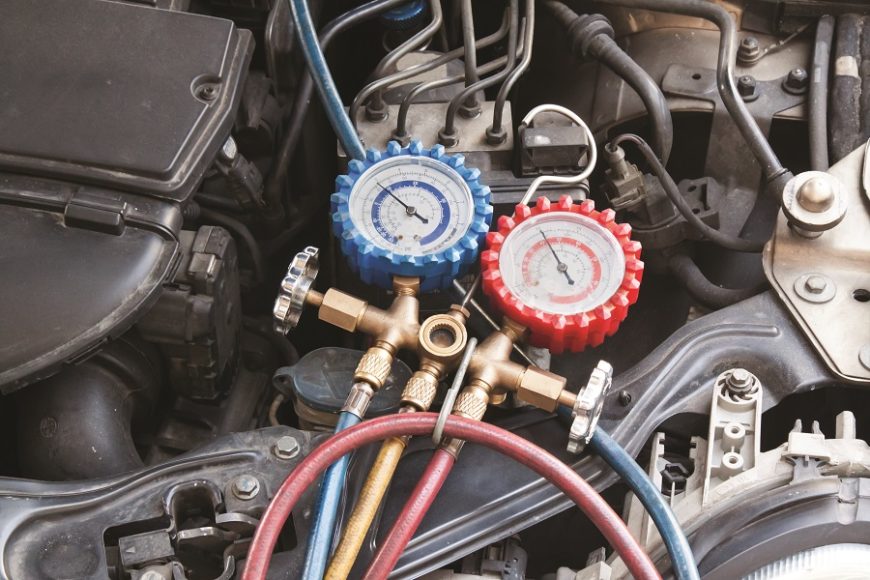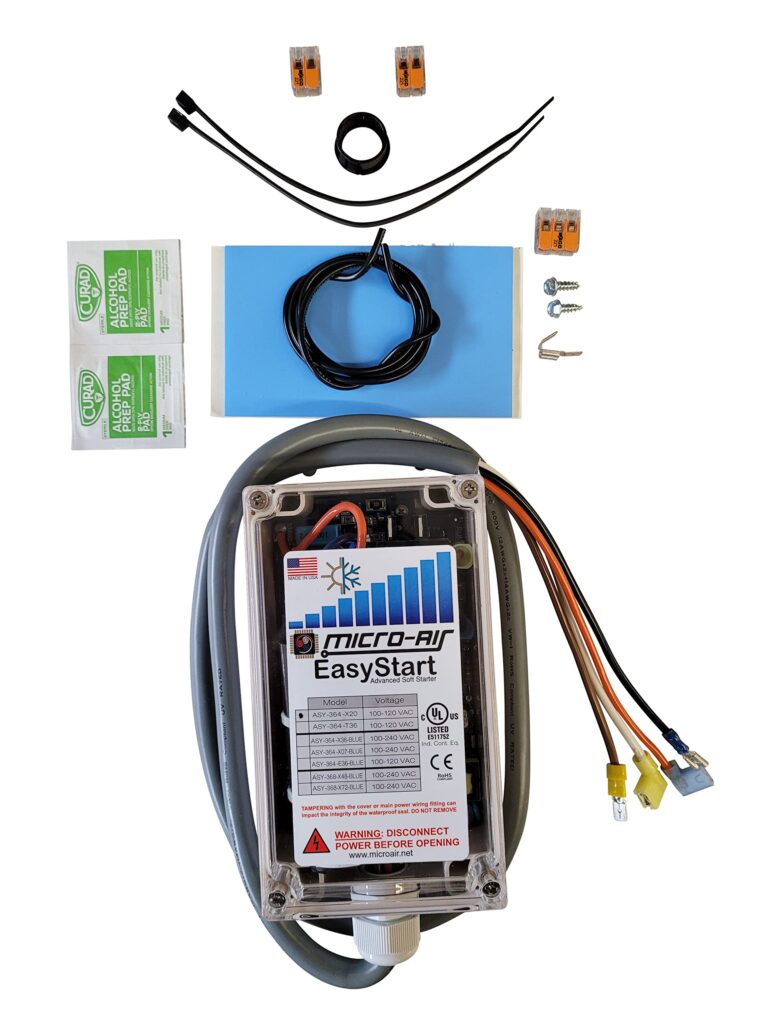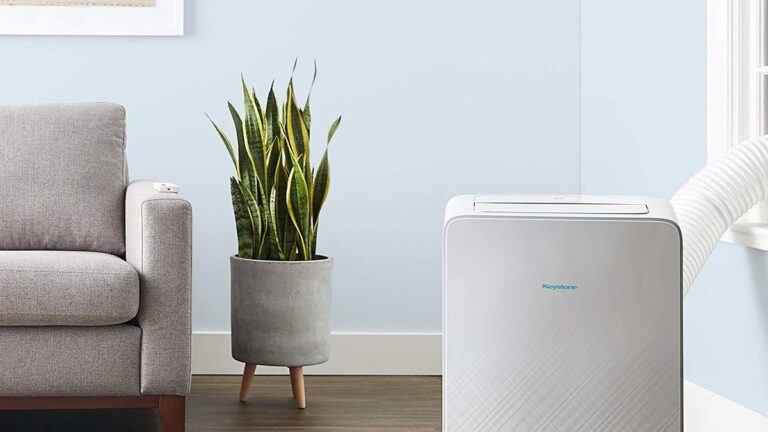How Do I Fix My Air Conditioner In My Car: Easy DIY Guide
To fix your car’s air conditioner, check the refrigerant levels and inspect for leaks. Clean or replace the cabin air filter.
A properly functioning air conditioner in your car is crucial for comfort, especially during hot weather. Regular maintenance can prevent many common issues. Low refrigerant levels are a frequent cause of AC problems. Leaks in the system can also lead to insufficient cooling.
Ensure you inspect and clean or replace the cabin air filter as it can get clogged with debris. Regular checks and prompt repairs can extend the lifespan of your car’s AC system. Understanding these basic steps can save you from costly repairs and keep your vehicle comfortable year-round.

Credit: www.autozone.com
Identifying Common Ac Problems
Struggling with your car’s air conditioner? Identifying common AC problems can help. This guide covers key issues like no cold air and strange noises. Fixing these can restore your car’s cool comfort.
No Cold Air
When your car AC blows warm air, it can be frustrating. Here are common reasons for no cold air:
- Low Refrigerant Levels: The AC needs refrigerant to cool air. If it’s low, you may need a refill.
- Blocked Condenser: Dirt and debris can clog the condenser. Clean it to restore airflow.
- Faulty Compressor: The compressor circulates refrigerant. If it’s broken, the AC won’t cool properly.
Check the refrigerant levels first. Then, inspect the condenser and compressor. A quick fix might be all you need!
Strange Noises
Strange noises from your car AC can indicate problems. Listen for these common sounds:
- Hissing: This could mean a refrigerant leak. Check for leaks and seal them.
- Banging: Loose parts can cause banging noises. Tighten any loose components.
- Squealing: A worn belt might be the culprit. Replace the belt if it’s damaged.
Identifying the noise helps you pinpoint the problem. Fixing it can prevent further damage to your AC system.
| Problem | Possible Cause | Solution |
|---|---|---|
| No Cold Air | Low Refrigerant | Refill Refrigerant |
| No Cold Air | Blocked Condenser | Clean Condenser |
| No Cold Air | Faulty Compressor | Repair/Replace Compressor |
| Strange Noises | Refrigerant Leak | Seal Leaks |
| Strange Noises | Loose Parts | Tighten Parts |
| Strange Noises | Worn Belt | Replace Belt |
Tools You’ll Need
Fixing your car’s air conditioner requires specific tools. This guide covers the basic tools and specialized tools you’ll need. Using the right tools ensures a smooth repair process and prevents further damage.
Basic Tools
- Screwdrivers: Both flathead and Phillips screwdrivers are essential.
- Wrenches: A set of adjustable wrenches is very useful.
- Pliers: Needle-nose pliers help with small parts.
- Socket Set: Include both metric and standard sizes.
- Flashlight: A bright flashlight helps you see in dark spaces.
Specialized Tools
Some air conditioner repairs need specialized tools. These tools are crucial for accurate and safe work.
- Manifold Gauge Set: Measures refrigerant pressure in the system.
- Refrigerant: R-134a is the most common type.
- Vacuum Pump: Removes air and moisture from the AC system.
- Thermometer: Checks the temperature of the air from vents.
- Leak Detector: Finds refrigerant leaks in the system.
The right tools make the job easier and more efficient. Always use quality tools to ensure the best results.
Checking The Refrigerant Level
One of the common reasons your car’s air conditioner might not work is low refrigerant. Checking and fixing the refrigerant level can be a straightforward process. This guide will help you understand how to check and recharge your car’s AC system.
Safety Precautions
Before starting, ensure safety first. Wear safety gloves and goggles. Always work in a well-ventilated area. Avoid direct contact with refrigerant as it can cause skin irritation.
Recharging The System
To recharge your car’s AC system, follow these steps:
- Buy a refrigerant refill kit. It includes a canister of refrigerant and a gauge.
- Locate the low-pressure service port on your car’s AC system. It usually has a blue cap.
- Attach the recharge hose to the low-pressure port. Ensure it’s securely connected.
- Start your car and turn the AC to its highest setting.
- Check the gauge reading. If it indicates low refrigerant, proceed to the next step.
- Hold the canister upright and press the trigger to release refrigerant. Do this in short bursts, checking the gauge frequently.
- Once the gauge shows the correct level, stop adding refrigerant and disconnect the hose.
After recharging, check if the air conditioner cools effectively. If problems persist, consult a professional mechanic.
Inspecting The Compressor
The compressor is a crucial part of your car’s air conditioner. It helps circulate the refrigerant. If the compressor fails, the air conditioner won’t cool properly. Inspecting it can save time and money.
Signs Of A Faulty Compressor
- Strange Noises: Clicking or grinding sounds may indicate a problem.
- Warm Air: If warm air blows instead of cold, the compressor may be faulty.
- Fluid Leaks: Look for refrigerant leaks around the compressor.
- Clutch Issues: The compressor clutch not engaging is a bad sign.
- Electrical Problems: Check for blown fuses or bad wiring.
Testing The Compressor
To test the compressor, follow these steps:
- Turn off the car engine.
- Locate the compressor under the hood.
- Inspect the compressor visually for any signs of damage.
- Check the compressor clutch; it should engage when the AC is on.
- Use a multimeter to check the electrical connections.
If these steps don’t solve the problem, consult a professional. Sometimes, the compressor needs replacement.
Examining The Condenser
One of the crucial parts of your car’s air conditioner is the condenser. It plays a vital role in cooling the air that flows inside your car. Examining the condenser can help diagnose issues quickly. Below, we will discuss two essential steps: cleaning the condenser and checking for damage.
Cleaning The Condenser
Dust and debris can clog the condenser. This reduces its efficiency. To clean it, follow these steps:
- Locate the condenser. It is usually in front of the radiator.
- Use a soft brush to remove loose debris.
- Spray water using a hose. Ensure the water pressure is moderate.
- Let it dry completely before turning on the air conditioner.
Clean the condenser regularly for optimal performance. A clean condenser ensures better cooling inside your car.
Checking For Damage
Inspect the condenser for any visible damage. Damaged fins or leaks can hinder its function. Follow these steps:
- Look for bent or broken fins.
- Check for oily spots, which indicate leaks.
- If you see any damage, consider professional repair or replacement.
Regularly check for damage to maintain your air conditioner’s efficiency. A well-maintained condenser extends the life of your car’s air conditioning system.

Credit: www.wikihow.com
Evaluating The Electrical System
Your car’s air conditioner might stop working due to electrical issues. Evaluating the electrical system can help identify and fix these problems. This section will guide you through the process.
Checking Fuses
The first step is to check the fuses. Fuses protect the electrical components of your car, including the AC system.
- Locate the fuse box. It is usually under the dashboard or in the engine compartment.
- Use the fuse diagram to find the AC fuse. The diagram is often on the fuse box cover.
- Inspect the fuse. A broken wire inside the fuse indicates it is blown.
- Replace the blown fuse with one of the same amperage rating.
If the new fuse blows quickly, there might be a deeper issue.
Inspecting Wiring
Next, inspect the wiring connected to the AC system. Faulty wiring can cause the AC to malfunction.
- Check for loose connections. Ensure all wires are securely attached.
- Look for damaged wires. Frayed or burnt wires need replacement.
- Use a multimeter to test continuity. No continuity means the wire is broken.
- Replace any damaged wires. Use the correct gauge and type of wire.
Proper wiring ensures the electrical system works efficiently.
These steps help you evaluate the electrical system of your car’s air conditioner. Fixing fuses and wiring can resolve many AC issues.
Replacing The Cabin Air Filter
Your car’s air conditioner might not work well if the cabin air filter is dirty. Replacing the cabin air filter is an easy task. This guide will help you understand how to do it.
Locating The Filter
The cabin air filter is usually behind the glove box. Different cars may have different locations. Refer to your car’s manual to find the exact location.
Follow these steps to locate the cabin air filter:
- Open the glove box and remove its contents.
- Look for clips or screws holding the glove box in place.
- Remove these clips or screws carefully.
- Gently lower the glove box to access the filter compartment.
Installing A New Filter
Once you have located the filter, it’s time to replace it. Follow these simple steps:
- Open the filter compartment by unlocking its cover.
- Slide out the old filter from its slot.
- Check the new filter for the airflow direction. It’s usually marked with arrows.
- Slide the new filter into the slot, following the airflow direction.
- Close the filter compartment and reattach the glove box.
Now, your car’s air conditioner should work better with the new cabin air filter.
When To Seek Professional Help
Sometimes fixing your car’s air conditioner can be tricky. Some issues need a professional’s touch. Knowing when to seek help can save you time and money.
Complex Issues
Some air conditioner problems are too complex for DIY fixes. Here are a few examples:
- Electrical Issues: Wiring problems require special tools and skills.
- Refrigerant Leaks: These need professional equipment to fix safely.
- Compressor Problems: Replacing a compressor is a big job.
Attempting to fix these can make the problem worse. Professional help ensures the job is done right.
Finding A Reliable Mechanic
Choose a mechanic who specializes in air conditioners. Follow these steps:
- Research: Look for reviews online.
- Ask for Recommendations: Friends and family might know someone reliable.
- Check Certifications: A certified mechanic guarantees quality.
Use these tips to find a mechanic you can trust. Your car’s air conditioner will be in good hands.

Credit: m.youtube.com
Frequently Asked Questions
Why Is My Car Air Conditioner Not Blowing Cold Air?
Your car’s air conditioner may not blow cold air due to low refrigerant levels, a faulty compressor, or a clogged condenser. Check for leaks, clean the condenser, and ensure the compressor is working properly. Regular maintenance helps prevent these issues.
Can I Fix My Car Ac Myself?
Yes, you can fix your car AC yourself. Basic tasks like replacing fuses or adding refrigerant are doable. However, complex issues should be handled by professionals to avoid damage. Always consult your car’s manual and follow safety guidelines.
Why Is My Car Blowing Hot Air When The Ac Is On?
Your car may blow hot air due to low refrigerant, a faulty compressor, or a blocked condenser. Check for leaks or professional diagnostics.
Conclusion
Fixing your car’s air conditioner can be straightforward with the right steps. Regular maintenance ensures it runs efficiently. Follow the outlined tips to troubleshoot common issues. If problems persist, consult a professional mechanic. Keeping your air conditioner in good shape enhances comfort during your drives.
Stay cool and enjoy your journeys!





